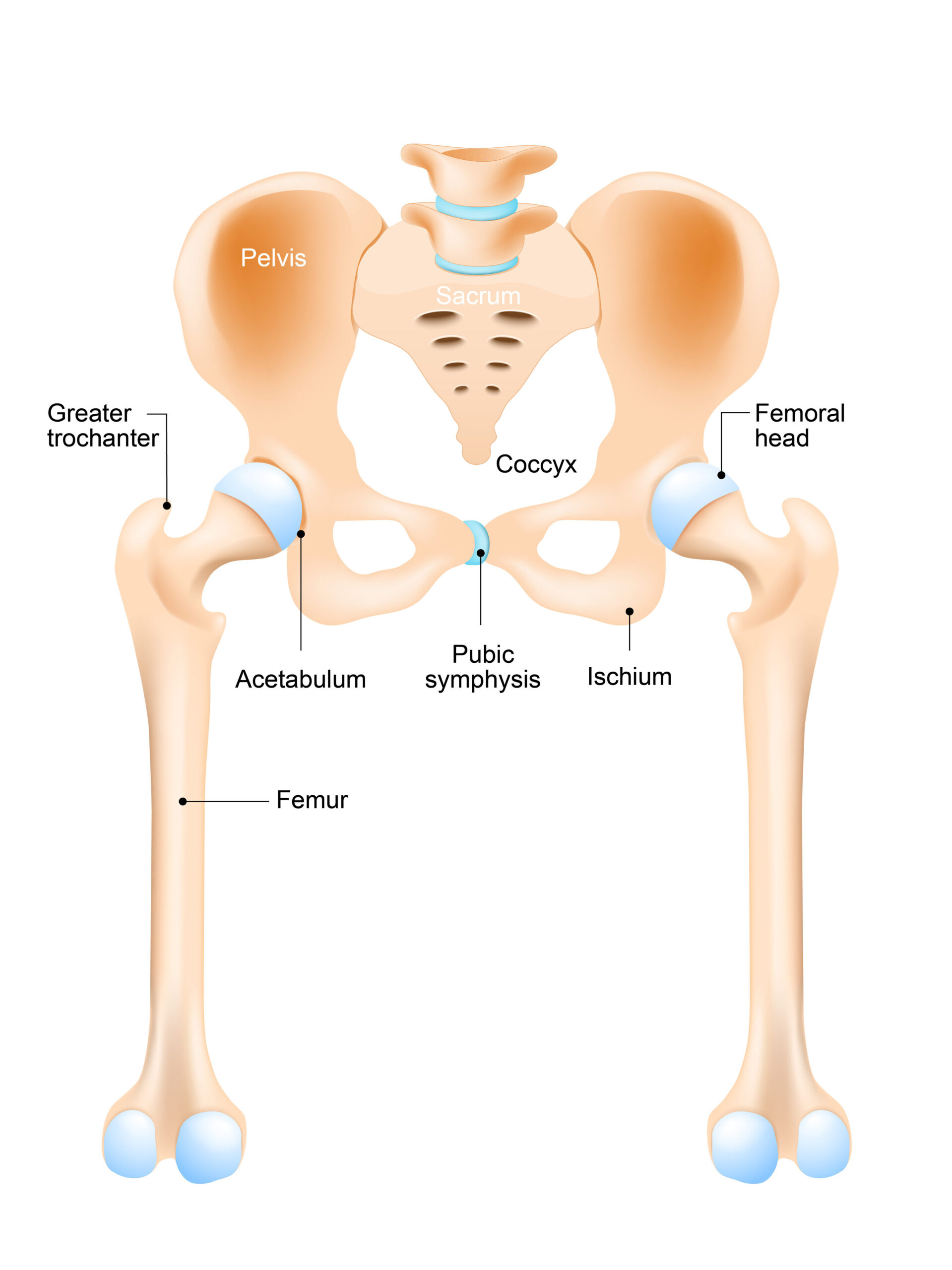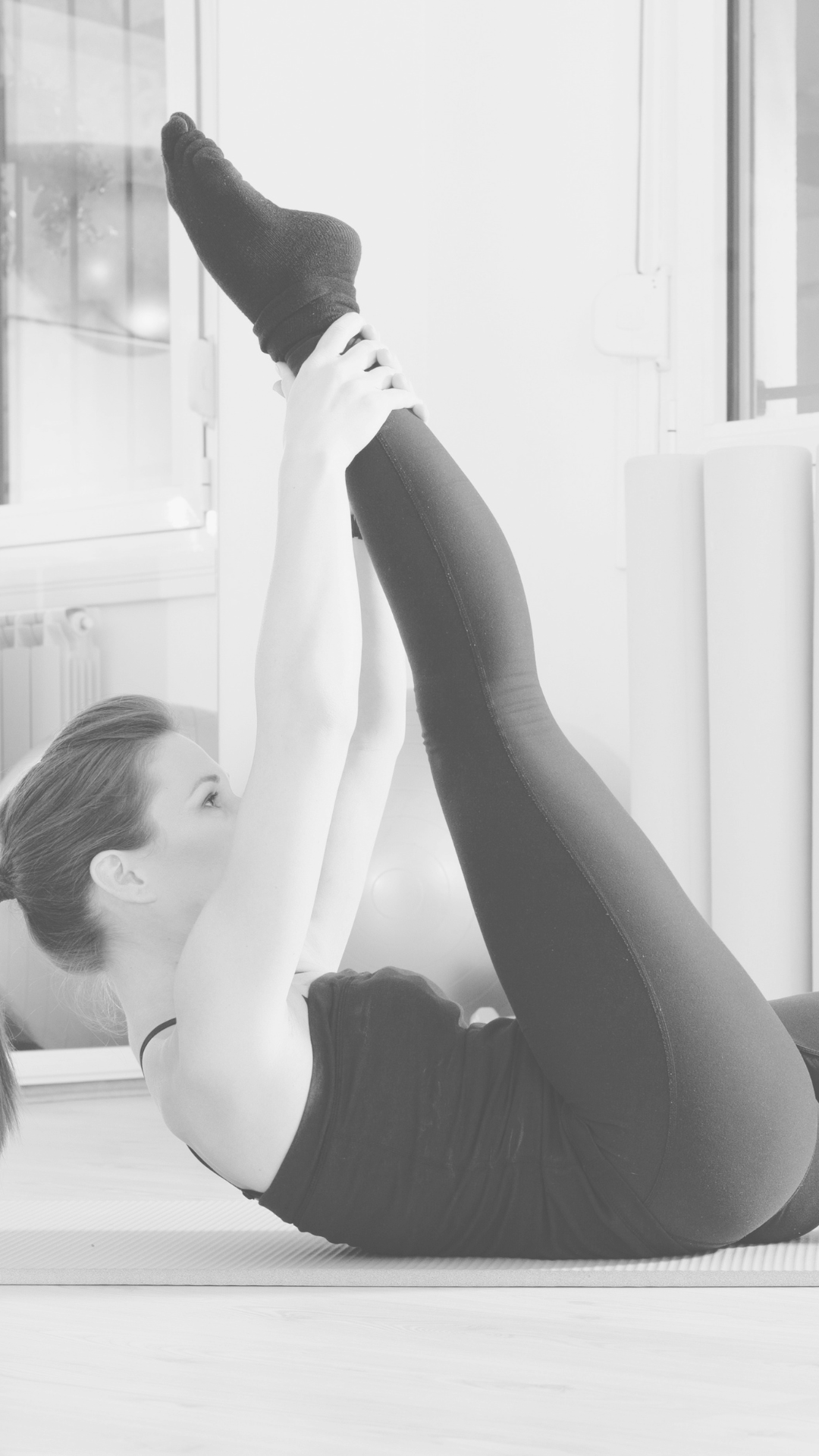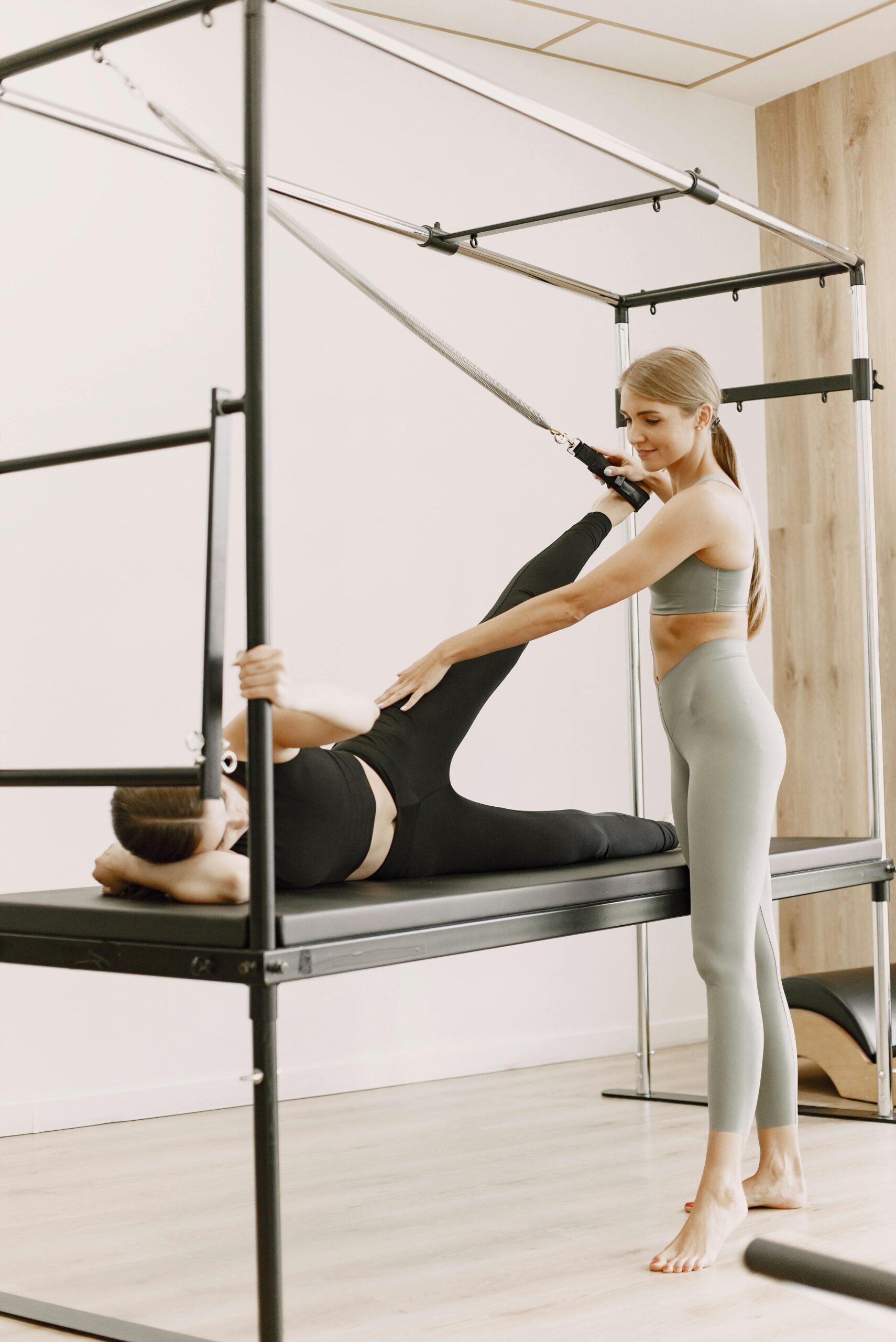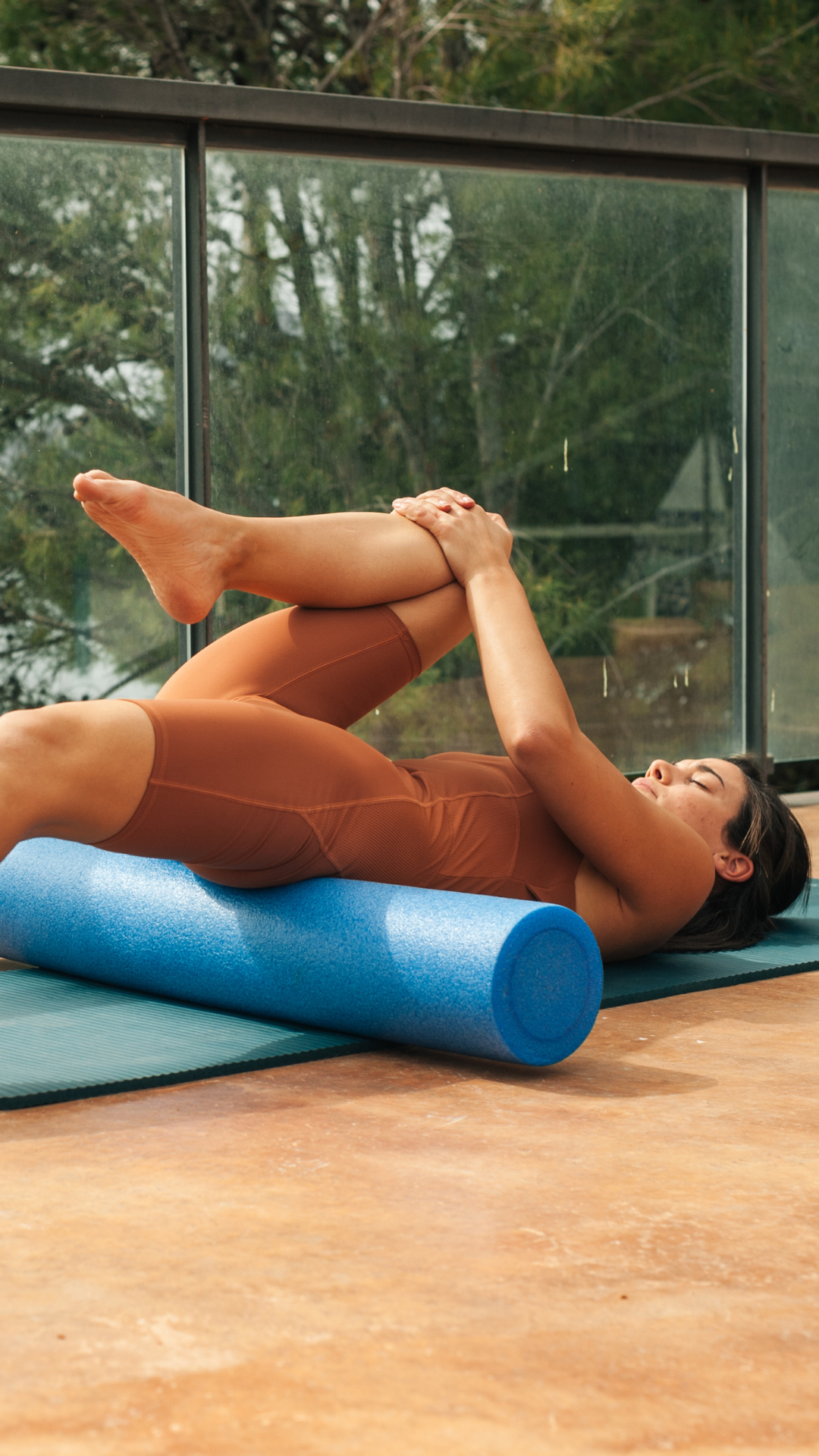
Our hip joints do a lot for us, and often times we take them for granted until we start to experience pain or tightness. It is quite common to experience an issue with your hips. After all, the hip joint is one of the largest weight-bearing joints in the body and is responsible for connecting our legs to our torso. The hip joint is classified as a ball and socket joint, like our shoulder joint, which enables the leg to move in all directions- flexion, extension, abduction, adduction, internal rotation, external rotation, and circumduction.
Our hip joints are extremely important, and in order to support all of the movement available to them, we need to make sure all of the surrounding muscles, tendons, and ligaments are strong and balanced so we can maintain our mobility and continue to move through life with ease. This means that if we want to be able to put our leg on the shower wall to shave, kick the door closed behind us as we carry in all of our groceries in one go, use our toes to pick up the pen that we dropped on the floor, or squat down to pet your dog, we have to keep our hip joint healthy!
To keep the hips moving smoothly, the muscles, ligaments, and tendons must all work together in harmony. Major muscle groups such as the hip flexors, hamstrings, glutes, adductors (inner thighs), and abdominals all either cross the hip joint, or directly attach onto the pelvis. If the muscles surrounding the hip joint get imbalanced, it can alter your alignment and cause issues in your feet, knees, and even your back. The whole body is connected and needs to be treated with that in mind! Pilates is a fantastic option because it is a full body exercise method that is alignment based and is centered upon quality of movement over the quantity of repetitions.
5 Ways Pilates Keeps Your Hips Healthy
1. Core Strength
Pilates is known for improving core strength, but did you know that core strength directly impacts the position of the pelvis? The abdominals do not directly create a movement of the leg at the hip joint, but the abdominals attach onto the pelvis and play a key role in hip health. If the abdominals are weak, it can contribute to changing the resting position of the pelvis to be in an anterior tilt, where the hips tilt more forward, and often causes the lower back to be in more extension. To get a good visual of this, think of your pelvis as a bowl of water. That bowl can tip in all directions depending on your muscle balance. The water will spill forward in this instance. By strengthening the abdominals and focusing on alignment, Pilates will help provide a solid foundation for your movement both during and outside of your workouts.
2. Exercise Variety
With great mobility comes great responsibility to keep all of the muscles surrounding the hip joint equally strong. Pilates offers a variety of exercises that move the body in all ranges of motion to help do that. If you have ever done footwork on the reformer or leg circles with your feet in the straps you will notice that you do the exercises in parallel, lateral rotation, and medial rotation. We do all three positions to work the hip joint from all angles. Have you ever noticed how medial rotation is the most challenging? That’s because we typically don’t use that range in everyday life. Pilates will serve as the missing link in your life by making sure no muscle is left behind. Your exercise programs can be adapted to strengthen your weaknesses and bring balance to your body.
3. Active Flexibility
We need to preserve our mobility as we age so we can continue to perform the activities that we love. What makes Pilates so great is that it is more than just passively stretching and holding a hamstring stretch. Passive stretching is important, but it will only get you so far. You need to have the strength to support and use that range of motion! Pilates will help you actively improve your flexibility so that you are strengthening your muscles as you are moving through your range of motion.
4. Stability
Pilates is widely known for creating a strong core, however every exercise truly addresses the whole body and how everything must work together. We are meant to be able to walk and transfer our weight, and we need the strength to support that! Pilates takes into account the smaller and often neglected muscles surrounding and stabilizing our hip joints and strengthens them along with our larger muscles.
5. Adaptable
The best part about Pilates is that it will meet you where you are and take you where you want to go. Whether your goal is to continue to stay strong and active as you age, get out of pain and rehab an injury, or improve your dancing and athletic performance, Pilates can be adapted to meet your personal needs and goals. Exercises can be modified by using different props, changing the spring tension, keeping the knees bent, etc. The options are endless!
If you’re interested in getting started with a custom Pilates program, click HERE to get started with the Introductory Special!
Welcome Friends
HELLo, I’m Alyssa
Movement is my life! My biggest passion is understanding the human body and I want to share it with you! Coming from a ballet background, I'm no stranger to injuries and the struggles of rehab, but I wouldn't change a thing because they led me to find Pilates and inspired me to do what I'm doing today.
I'm here to help you feel stronger, move better, recover from and reduce your risk of injuries, & exceed your performance goals.
If you love movement, anatomy and you want to laugh & enjoy your workouts, you're in the right place!
Signature program
Heal Your Hips
This is my 9 week program that will rebuild your hip health from inside out. The results speak for themselves - if you're experiencing hip discomfort, this is where to begin.
BEST THE Blog
of
In this post, I break down why a holistic, full-body approach is the key to lasting hip health—and how to start improving your mobility, strength, and comfort today!
Have you ever felt like you were doing an exercise perfectly, but your instructor keeps giving you the same correction? And you get frustrated because in your mind you’re not doing anything wrong? You’re not alone! This happened to me all the time in dance class. My ballet teacher always told me to straighten my […]






+ Show / Hide Comments
Share to: